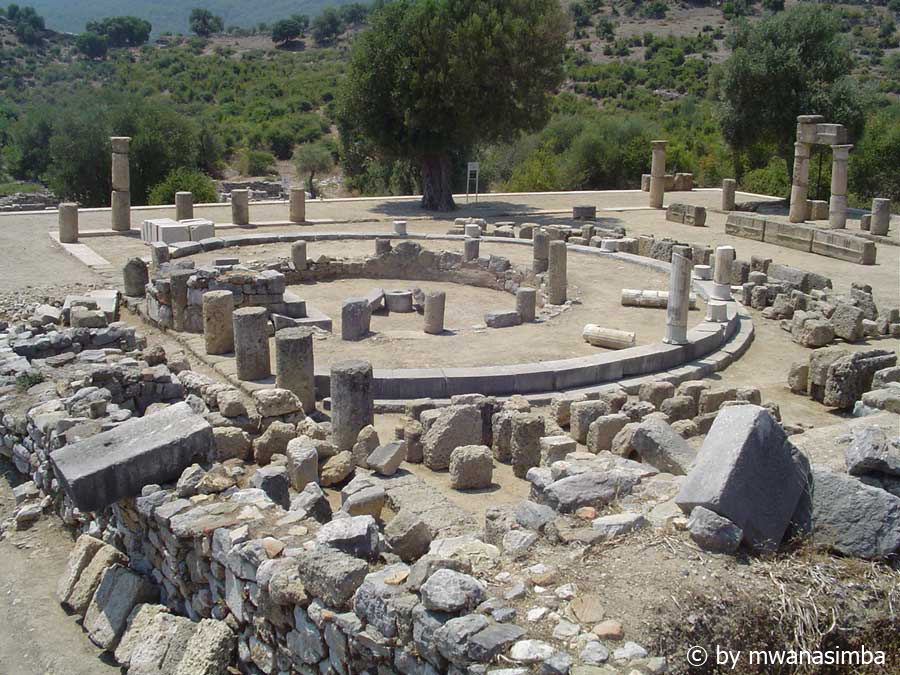 |
| Kaunos in Caria | |||
|
|
|
||
| The Byzantine Basilica, above the Acropolis | |||
|
The ancient city of Kaunos, originally located by the sea, is now located in the Dalyan Delta (Calbis), which connects Lake Köyceğiz with the Mediterranean Sea by shifting the coast eight kilometres from the sea. However, the delta is not completely silted up, but connected to the sea via marshes and waterways. |
|||
|
|
|||
| The silted up harbour | |||
|
The history of the place goes back to the 10th century BC. Kaunos belonged temporarily to the Attic Sea Alliance and to the mainland property of the nearby island of Rhodes. The place was considered rich in ancient times, but unhealthy due to its location in the marshy river delta, where pathogens can easily multiply. He was known for his widely exported dried figs. At that time, even famous doctors blamed fruit for it. Today it is known that it was the mosquitoes in this area that infected the population with malaria. A quote from a singer known for his pointed tongue has been passed down: "How could I dare to describe a city as unhealthy, where even dead people walk the streets?" |
|||
|
|
|||
| The Roman Theatre | |||
|
On the western slope of the Acropolis is the rather well-preserved Roman theatre. The 38 meter long stage house was 8.5 meters deep and probably several storeys high. |
|||
|
|
|||
| The Terrace Temple | |||
|
|
|||
| The Acropolis | |||
|
|
|||
|
Not much is known about the Acropolis. Also, there is no reasonable way up. It is a strain to climb up the steep slope in the blazing sun. However, the view of Dalyan and the reed-covered delta of the Köycegiz River compensates for the effort. The Greek geographer Strabon wrote: "Kaunos has a warehouse for ships and a lockable harbour. Above the town on a hill lies the Veste Imbros. Although the area is blessed by fertility, according to general insurance the city has unhealthy air in summer and in autumn... because of the heat and the abundance of fruit..." |
|||
|
|
|||
|
|
|||
| Roman bath | |||
|
|
|||
|
Some remains of ancient buildings can still be seen, especially caric tombs carved into the rock, dating from the 4th century B.C., but also a Roman theatre, large thermal baths, a nymphaeum, an agora, temple, a gymnasium, harbours and an acropolis. |
|||
|
|
|||
|
|
|||
|
Carian rock tombs between Dalyan and Kaunos |
|||
|
|
|||
|
The rock tombs of the Carian kings near Dalyan are among the most famous rock tombs on the Turkish south coast. Here the style of the Lycian royal graves was adopted. The unfinished royal tomb impressively shows that the facades were knocked out of the rock from top to bottom. Why this tomb was not completed lies in the dark of history. It is assumed that the client died prematurely and that the balance of power changed as a result. |
|||
| Photos: @chim | |||
| Translation aid: www.DeepL.com/Translator | |||
| Source: Wikipedia and others | |||
|
|
|||


